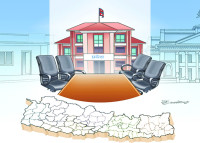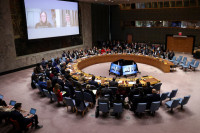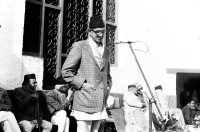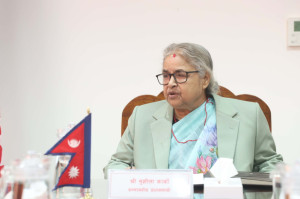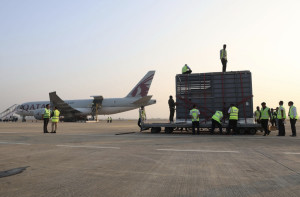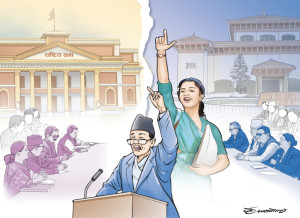Columns
Digital health system in Nepal
Health service delivery will be accessible and affordable for all if digital health is prioritised.
Dr Pallavi Koirala
The World Health Organization (WHO) defines digital health as “the field of knowledge and practice associated with developing and using digital technologies to improve health.” Electronic records, telehealth (telemedicine and mobile health), e-commerce (mobile or online fee payment and e-learning), social media, public health surveillance, health promotion strategies, self-tracking wearable devices, medical imaging, genomics and information systems are examples of digital health components. These technologies empower health service providers to use real-time data, information and knowledge to improve community health outcomes within decentralised health systems through a citizen-centric approach.
Today, the traditional doctor-centric paradigm has shifted to patients, demanding they be conscious of their health. As a result of this transition, clinical information is evidently insufficient. Various determinants of health like genetic, social, economic, history, and nutrition have an important role. Digital health allows efficient data handling and management of the large “data paradigm” in healthcare.
Recognising the potential of digital health, the WHO global health strategy focused on developing a consistent digital health goal aligned with the country’s health needs. More than 120 member states have developed methods and policies. Digital health has added value to the healthcare system through various information technologies, like mobile health, which is used for data collection and reporting from community health workers to respective health facilities. This ensures direct patient care by sending reminders and messages to mobile phones, facilitating improved health education and behaviour change communication.
Since 1993, Nepal has used digital health technologies to transform the traditional Health Management Information System (HMIS) and Logistic Management Information System into a modern software medium. The Digital Health Nepal aims to increase the use of virtual technologies—such as videoconference, e-learning and mobile health. A telemedicine guideline based on the Nepal Medical
Council (NMC) Act 1964, has been developed to establish guidelines and protocols for the use of telemedicine in the country. Nepal has had incredible success in digital adaptation, with mobile penetration exceeding 100 percent and the internet reaching 63 percent. The online service has been expanded to 2,481 health institutions, and 431 local levels are using the internet service to provide public services.
Nepal’s National Information and Communication Technology Policy has the vision of “Digital Nepal” by emphasising the role of ICT in enhancing efficiency and expanding the health system across the three-tier systems. This is accomplished by fostering strong inter-sectoral connections and generating an interoperable ICT sector. To promote the successful use of digital health technologies, the Government of Nepal is committed to accelerating digital literacy and skills among health professionals, emphasising the availability of ICT infrastructure in government offices.
In developing countries like Nepal, digital health is considered one of the most potential resources for making healthcare more accessible and affordable, particularly in remote areas. The initiatives address accessibility challenges while enhancing healthcare service quality. Healthcare facilities in various countries lack access to adequate, appropriate and consistent digital health technologies. This poses challenges to countries where healthcare is considerably more unstable, with limited resources and a unique architecture. For example, Pakistan has revealed issues related to digital health initiatives with national strategies, inadequate digital health skills among health professionals and insufficient technical infrastructures, such as poor internet connection and perceived usability from the provider’s perspective. Despite ongoing efforts, digital health interventions are not fully incorporated within the national health system.
Nepal’s HMIS faces challenges due to erroneous and inconsistent reporting. As a result, data quality remains uncertain, limiting effective policy planning, budgeting and decision-making. There is a significant disparity in the country’s access and utilisation of healthcare services, with 79.42 percent of people living in rural areas facing financial, sociocultural, geographic and organisational barriers to care. There is also a lack of preparedness for obtaining health information, assigning infrastructure and exchanging and using information, thereby lagging the country behind in enabling health workers to execute digital health interventions.
Way forward
The government of Nepal plans to conduct more research on assessing digital health readiness across the country to make evidence-informed decisions and plan for digital health interventions in Nepal. These digital health initiatives should align with the Digital Nepal Framework and National Health Policy to guide the provincial and local governments in providing effective health services. As the lack of infrastructure is a huge barrier to implementing digital health, the Ministry of Health and Population should coordinate with the Ministry of Communication and Information Technology to ensure continuous internet and electricity supply in the complex geographical setting and establish a monitoring mechanism to ensure effective financial management for digital health interventions across the three-tier system.
Collaborative and inter-sectoral coordination is crucial to overcome the challenges of realising and using the full potential of digital health services and their implementation in the future. Doctors should be aware of digital health, and patients should play an essential role in implementing it. Health service delivery will eventually be accessible and affordable if digital health is prioritised and consistently worked upon.




 15.69°C Kathmandu
15.69°C Kathmandu
